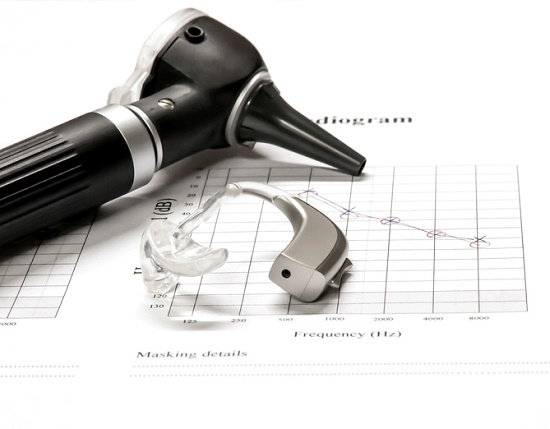
Are you planning on investing in hearing aids?
If so, it can seem overwhelming at first. There are a number of options out there, and the obscure terminology doesn’t help.
That’s why we’re going to summarize the most common and significant terms, so when you work with your hearing professional you’ll be well prepared to find the best hearing aid for you.
Hearing loss and testing
High-frequency hearing loss – this is the most commonly encountered form of hearing loss. Patients with high-frequency hearing loss have the greatest difficulty hearing higher frequency sounds, like the sounds of speech.
Sensorineural hearing loss – this type of hearing loss develops when there is injury to the nerve cells of the inner ear. This is the most prevalent form of permanent hearing loss triggered by being exposed to loud noise, the aging process, genetics, or other medical conditions.
Bilateral hearing loss – hearing loss in both ears, which could be symmetrical (the equivalent degree of loss in both ears) or asymmetrical (different levels of loss in each ear). Bilateral hearing loss is normally best treated with two hearing aids.
Audiogram – the graph which provides a visual depiction of your hearing testing results. The vertical axis measures decibels (volume) and the horizontal axis measures frequencies (pitch). The hearing consultant documents the lowest decibel level that you can hear at each frequency. If you necessitate higher volumes to hear higher frequencies, your audiogram will show a pattern of high-frequency hearing loss.
Decibel (dB) – the unit utilized to measure sound level or strength. Normal conversation registers at around 60 decibels, and continuous exposure to any sound more than 80 decibels could cause permanent hearing loss. Seeing as the scale is logarithmic, an increase of 6-10 decibels doubles the volume of the sound.
Frequency – represents pitch as measured in hertz. Think of moving up the keys on a piano, from left to right (low-frequency/pitch to high-frequency/pitch).
Threshold of hearing – The lowest decibel level that can be heard at each individual frequency.
Degree of hearing loss – Hearing loss can be characterized as mild (26-40 dB loss), moderate (41-55), severe (71-90), or profound (91+).
Tinnitus – a constant ringing or buzzing in the ears when no exterior sound is present. Often a sign of hearing injury or loss.
Hearing aid styles
Digital hearing aid – hearing aids that include a digital microchip, utilized to custom-program the hearing aids to accommodate each person’s distinctive hearing loss.
Hearing aid style – the type of hearing aid specified by its size and location in relation to the ear. Main styles consist of behind-the-ear, in-the-ear, and in-the-canal.
Behind the ear (BTE) hearing aids – the majority of hearing aid components are contained within a case that fits behind the ear, attached to an earmold by a clear plastic tube. Mini-BTE hearing aids are also available.
In the ear (ITE) hearing aids – the hearing aid parts are contained inside of a case that fits in the external part of the ear.
In the canal (ITC) hearing aids – the hearing aid components are enclosed in a case that fits within the ear canal. Completely-in-the-canal (CIC) hearing aids are also available that are nearly invisible when worn.
Hearing aid parts
Earmold – a piece of plastic, acrylic, or other pliable material that is formed to the contours of the individual’s ears, used for the fitting of hearing aids.
Microphone – the hearing aid component that picks up sound in the environment and converts the sound waves into an electrical signal.
Digital signal processor – a special microprocessor inside a hearing aid that can adjust and enhance sound.
Amplifier – the part of the hearing aid that boosts the volume of sound.
Speaker – the hearing aid component that supplies the magnified sound to the ear.
Wireless antenna – available in specific hearing aids, permitting wireless connection to compatible gadgets such as smartphones and music players.
Hearing aid advanced features
Variable programming – hearing aid programming that permits the individual to adjust sound settings depending on the environment (e.g. at home versus in a busy restaurant).
Directional microphones – microphones that can center on sound coming from a specified location while reducing background noise.
Telecoils – a coil situated within the hearing aid that enables it to hook up to wireless signals emanating from telephones, assistive listening devices, and hearing loops installed in public venues.
Noise reduction – functionality that helps the hearing aid to distinguish speech sounds from background noise, which results in the enhancement of speech and the suppression of disruptive noise.
Bluetooth technology – enables the hearing aid to connect wirelessly with a number of devices, including cell phones, computers, audio players, and other compatible devices.
Not sure which features you need, or which you could live without? Let us help you discover the best hearing aid for your distinct requirements. Call us today!
